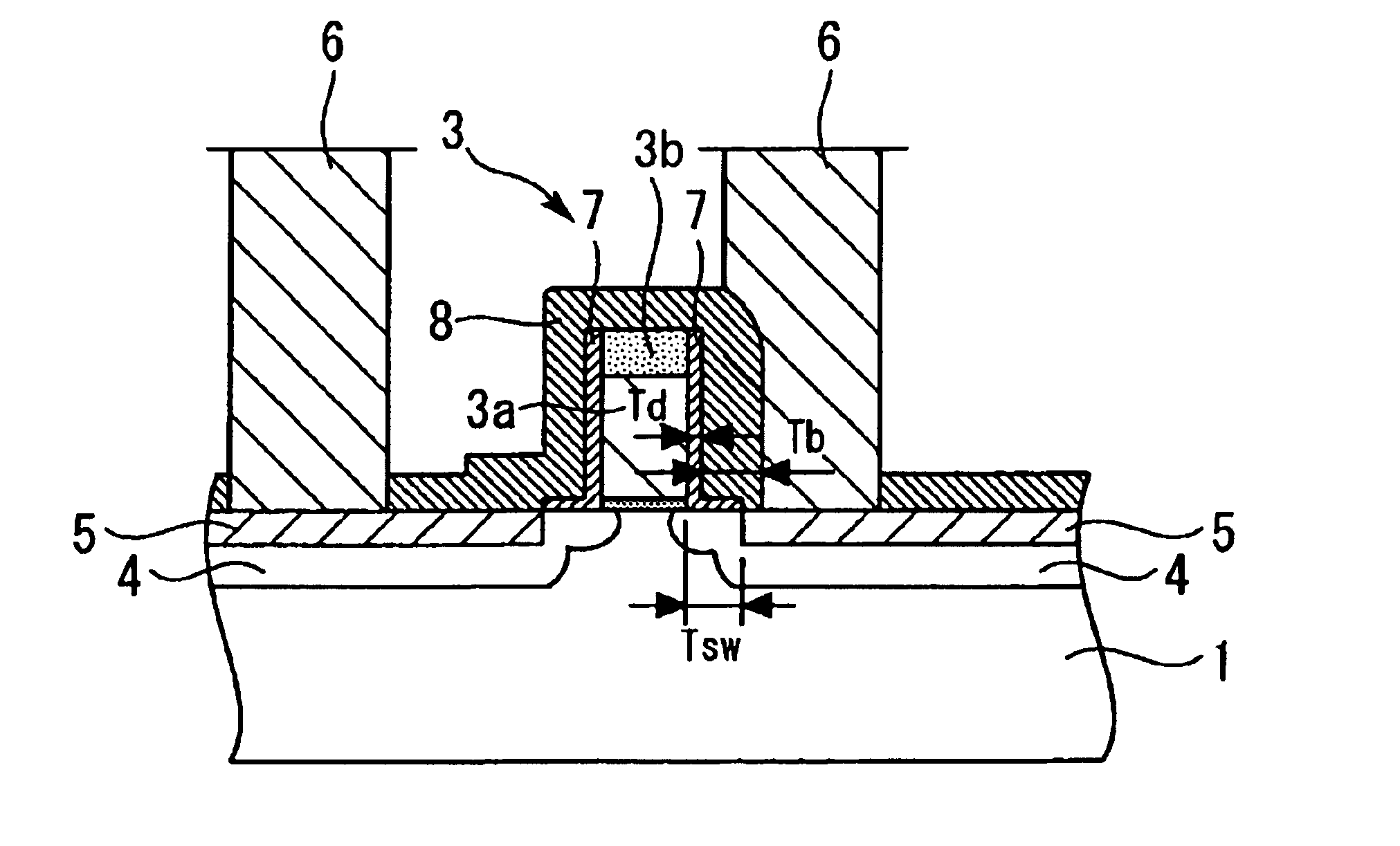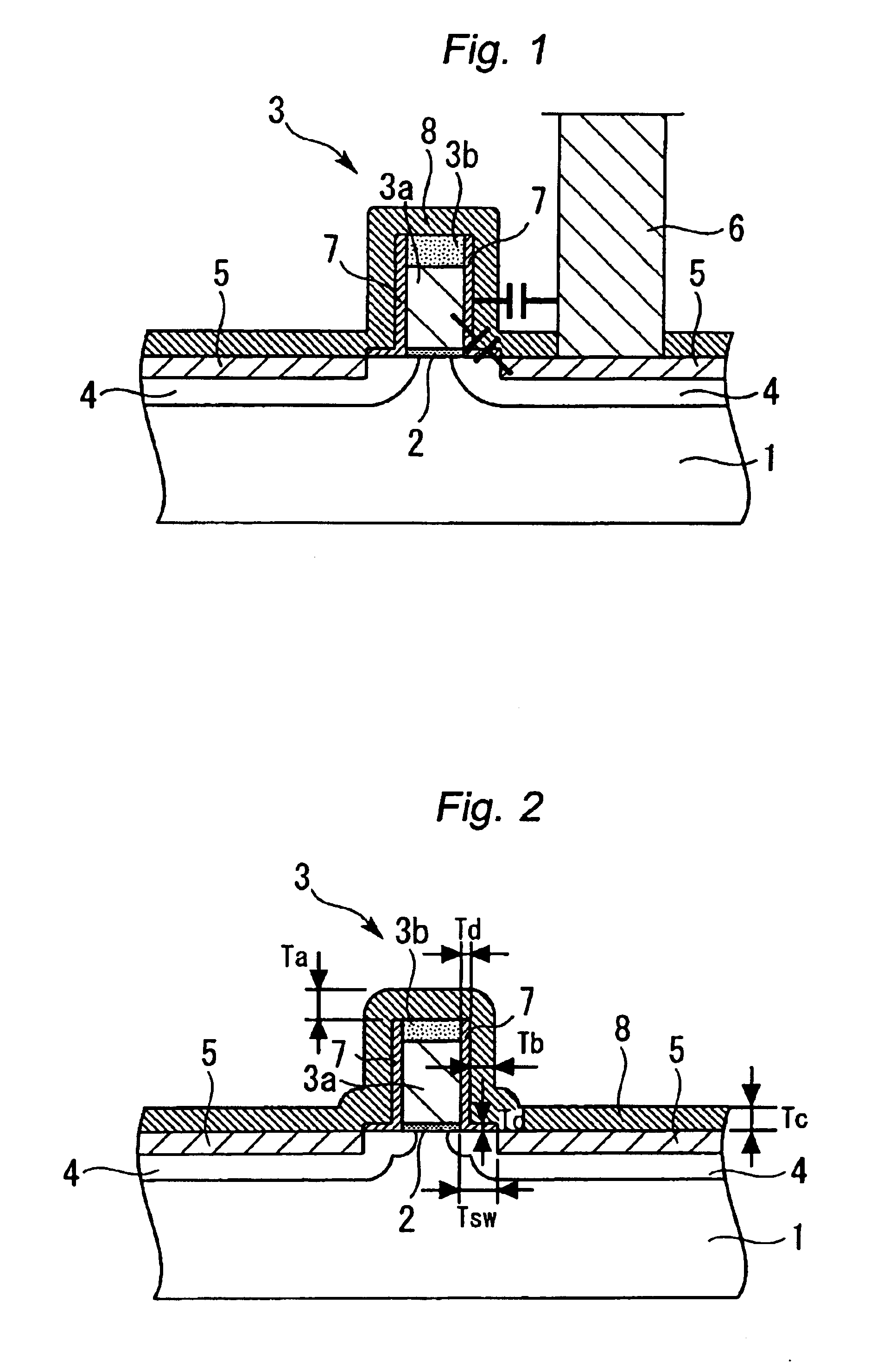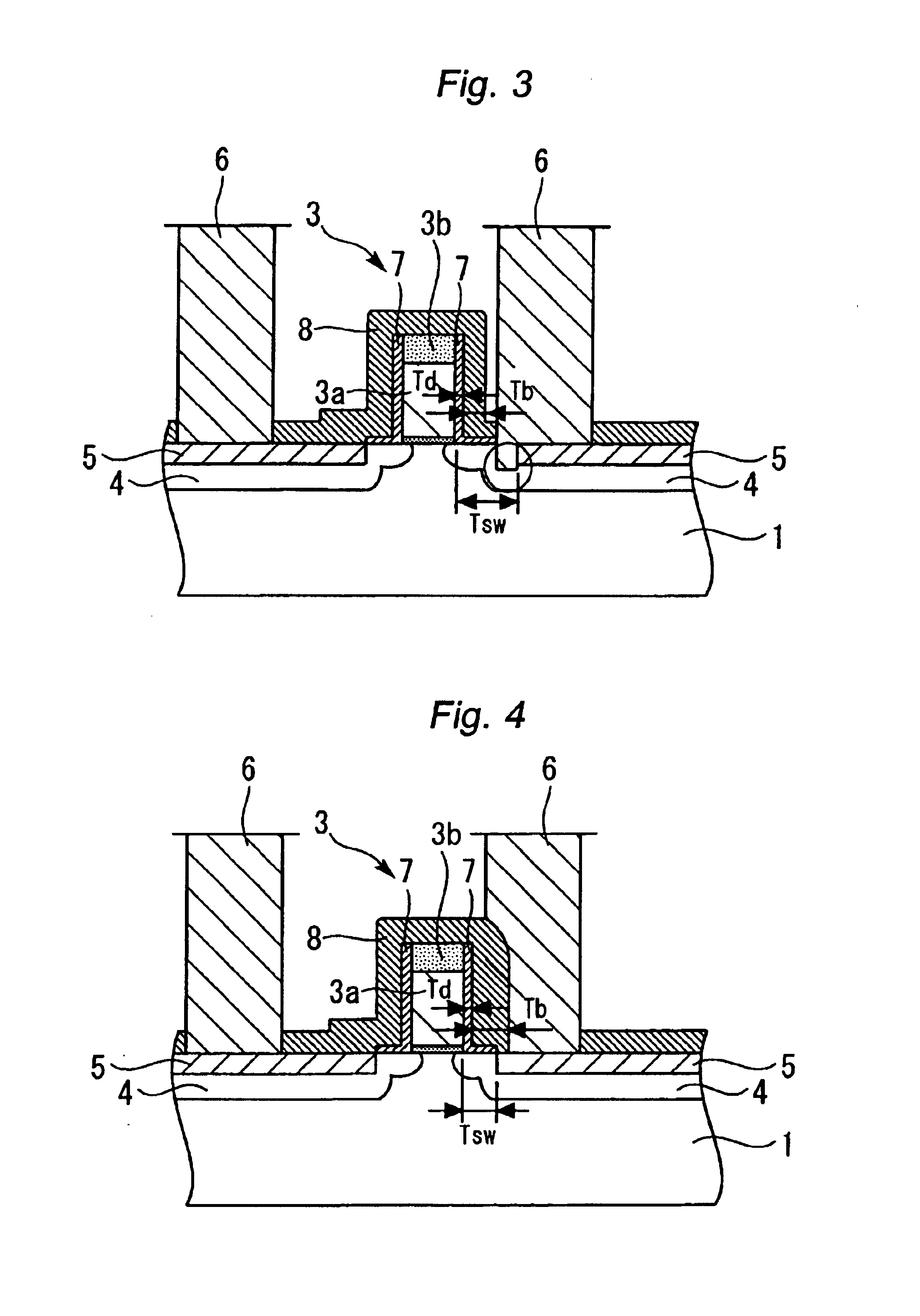Semiconductor device and method for manufacturing the same
a technology of semiconductor devices and semiconductors, applied in semiconductor devices, semiconductor/solid-state device details, electrical apparatus, etc., can solve the problems of affecting the affecting the growth of silicide between gate electrodes, and difficult formation of refractory metal layers, etc., to reduce the diameter of shared contacts, reduce the occurrence of defective junction leakage, and increase contact resistance
- Summary
- Abstract
- Description
- Claims
- Application Information
AI Technical Summary
Benefits of technology
Problems solved by technology
Method used
Image
Examples
first embodiment
FIG. 1 is a schematic sectional view showing a semiconductor device according to First Embodiment of the present invention. The configuration of the semiconductor device of First Embodiment will be described below referring to FIG. 1. The semiconductor device of First Embodiment is an example of MOS transistors of an SAC structure to which the present invention is applied, and comprises a gate electrode 3 formed on a silicon semiconductor substrate 1 through a gate oxide film 2; a pair of impurity diffusion layers 4 of source / drain diffused layers formed on the surface region of the silicon semiconductor substrate 1 in the both sides of the gate electrode 3; a silicide film 5 formed on the surface of the impurity diffusion layers 4; and a contact electrode 6 electrically connected to the silicide film 5.
Silicon nitride films 7 are formed on the sidewalls of the gate electrode 3. These silicon nitride films 7 are formed so as to extend from the sidewalls of the gate electrode 3 to th...
second embodiment
FIG. 6 is a schematic sectional view showing a semiconductor device according to Second Embodiment of the present invention. Second Embodiment shows a memory cell configuration in which a silicide film 5 is formed in an impurity diffusion layer 4 on the surface of a silicon semiconductor substrate 1 between gate electrodes 3 formed adjacent to each other. The configurations of the gate electrode 3, the silicon nitride film 7 around the gate electrode 3, and the silicon nitride film 8 are the same as those in First Embodiment.
It is very difficult to form silicide in an impurity diffusion layer surrounded by a gate electrode. The reason for this is that the sidewall spacer formed on the sidewall of the gate electrode extends laterally. In particular, if the pitch between gate electrodes is small, the formation of a refractory-metal film on the impurity diffusion layer by sputtering becomes difficult.
In the semiconductor device shown in FIG. 6, a silicon nitride film 7 of a uniform thi...
third embodiment
Next, Third Embodiment of the present invention will be described. As described referring to FIG. 19, since a shared contact for simultaneously connecting the gate and the impurity diffusion layer is suitable for the size reduction of memory cells, it is used in SRAM cells and the like that require high integration.
The semiconductor device of Third Embodiment is the semiconductor device of First Embodiment applied to a memory cell that has a shared contact. The configuration of the semiconductor device of Third Embodiment will be described below referring to FIG. 9. In FIG. 9, the configuration of gate electrodes 3, and the silicon nitride films 7 and 8 around the gate electrodes 3 is the same as the configuration of First Embodiment.
In the semiconductor device shown in FIG. 9, the silicon nitride films 8 on one surface of the impurity diffusion layer 4 are removed due to the formation of the contact hole, and the silicon nitride films 8 are also removed from the upper surface of th...
PUM
 Login to View More
Login to View More Abstract
Description
Claims
Application Information
 Login to View More
Login to View More - R&D
- Intellectual Property
- Life Sciences
- Materials
- Tech Scout
- Unparalleled Data Quality
- Higher Quality Content
- 60% Fewer Hallucinations
Browse by: Latest US Patents, China's latest patents, Technical Efficacy Thesaurus, Application Domain, Technology Topic, Popular Technical Reports.
© 2025 PatSnap. All rights reserved.Legal|Privacy policy|Modern Slavery Act Transparency Statement|Sitemap|About US| Contact US: help@patsnap.com



